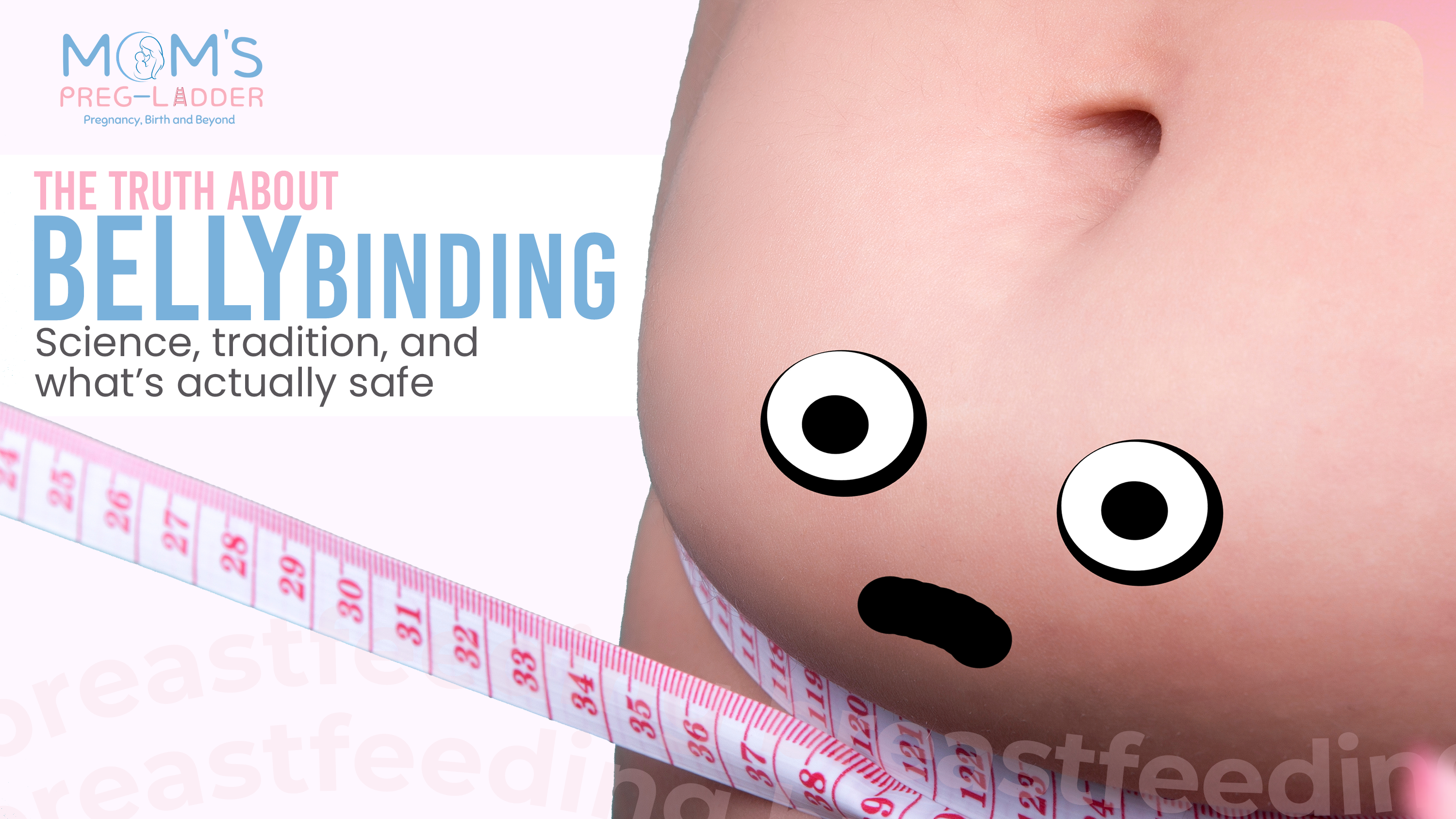Generations of women across cultures have practiced belly binding as part of postpartum care. Whether using soft muslin cloth or modern compression belts, this practice is believed to help new mothers heal faster after childbirth. But does belly binding actually work? And more importantly, is it safe?
What is belly binding?
Belly binding denotes the wrapping of cloth or structurally designed garments around the abdomen after childbirth. The long strips of muslin or cotton used traditionally as postpartum girdles, belly bands, and compression wraps are usually made of elastic or breathable materials.
Hence, the idea behind belly binding is to gently compress the tummy area. The belly binding acts as an external support for muscles and tissues that are stretched or weakened due to pregnancy and childbirth.
How belly binding can assist in postpartum recovery
Pregnancy stretches abdominal muscles, organ shift from their usual positions, and puts strain on the pelvic floor. Postpartum is an event wherein the body is reverted to its pre-pregnancy state, having belly binding externally supporting this healing.
For most cesarean delivery women, belly binding is more than just support; it is pain management, helps to reduce swelling, and aids in the healing of surgical incisions. It has been deduced from research that women who had done a belly bind after C-section felt less pain and bleeding and were comfortable in recovery.
What belly binding doesn’t do?
Though belly binding aids to some extent with physical support, let us clear some of the common myths surrounding it. It will not lead to weight loss or permanent shrinking of the uterus. Belly binding is simply a supportive technique and will not go away with postpartum belly fat or make a flat stomach overnight.
The misuse of binding, such as being too tight or using inferior materials, can cause discomfort; it might even restrict breathing or circulation. Always buy quality products, and if in doubt about how to use them, consult your healthcare provider.
Types of belly binders
Basically, belly binders come without a standard size befitting all. Traditional methods such as the bengkung belly binding of Malaysia involve wrapping a long cloth about 16 yards around the abdomen and hips in several layers. These wraps should be ideally worn 12 hours each day for 30 days.
Modern versions like a postpartum girdle or belly band can be easier on anybody, coming with adjustable closures and different lengths to suit individual preference. They are perfect for mothers who want to have things easy during their daily hustle post-delivery.
When and how to start
When to start belly binding depends largely on how the baby was delivered. After vaginal birth, traditional wraps can be used almost immediately. However, after a C-section, it’s crucial to wait until the incision is properly healed before using a wrap like bengkung. Modern girdles, on the other hand, are often safe to use sooner but should be used with a doctor’s guidance.
Summing up
Belly binding is a blend of tradition and modern health practice. While it can provide comfort and support, especially after C-sections, it should always be used thoughtfully and safely. For women considering belly binding, consulting with healthcare professionals ensures that the practice supports their recovery rather than causing harm.

